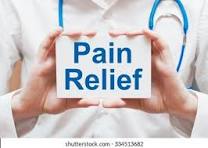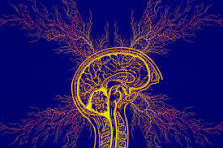Introduction:
Chronic pain is a complex and pervasive condition that affects not only the physical health of an individual but also their mental well-being. This article explores the complex relationship between chronic health and pain. We examine the psychological impact of persistent discomfort, mental health coping strategies, and the importance a holistic management approach.
I. The psychological impact of chronic pain:
1.1 Pain and mental health have a bidirectional connection. Chronic pain can lead to mental health issues, or worsen them. Mental health problems can also increase the perception of pain. Understanding the interplay of these factors is essential for improving the overall well-being and health of people with chronic pain.
1.2 The Emotional Cost of Chronic Pain. Chronic pain can cause feelings of sadness, anger and frustration. In some cases, it may even lead to hopelessness. Daily pain can cause anxiety, loss of functionality and emotional exhaustion.
II. Coping strategies for chronic pain from a mental health perspective:
2.1 Acceptance & Commitment Therapy: Acceptance & Commitment Therapy is a therapy that focuses on accepting pain, rather than trying to eliminate it. By focusing on values and setting goals based on mindfulness, people can learn to live a meaningful existence despite chronic pain. ACT can increase psychological flexibility and resilience.
2.2 Cognitive-Behavioral Therapy: Cognitive-Behavioral Therapy is a popular therapeutic approach to managing chronic pain. It helps people identify and modify negative thoughts, develop effective coping techniques, and address the impact of pain on their emotional state. CBT empowers individuals to gain control of their lives.
2.3 Mindfulness Based Stress Reduction: Mindfulness Based Stress Reduction incorporates mindfulness mediation and awareness techniques in order to reduce stress and enhance overall well-being. MBSR is beneficial for people with chronic pain. It can increase their pain tolerance, reduce emotional reactivity, and help them develop a more accepting outlook.
2.4 Gradual Exposure and De-sensitization: Gradual exposure and de-sensitization involves gradually exposing people to movements or activities that can cause pain with the aim of reducing anxiety and fear associated with these actions. This method, which is guided by a health professional, can help individuals regain confidence in their daily activities.
III. The role of social support:
Building a Support Network: Chronic pain affects relationships with friends, family and colleagues. A strong support network is vital for mental health. Open communication, compassion, and understanding by loved ones can help to reduce feelings of loneliness and increase a sense connection.
Support groups and peer interaction: Joining support groups and connecting with others who have similar experiences can provide validation and encouragement. Shared coping strategies, discussions of challenges and support from others who are facing similar struggles can foster a sense community and understanding.
IV. Emotional resilience and mind-body connection:
4.1 Cultivating emotional resilience: The ability to adapt, bounce back and overcome adversity is crucial in dealing with chronic pain. Cultivating a positive attitude, setting realistic goals and practicing self-compassion are all practices that contribute to emotional resilient and foster an adaptive response to chronic pain.
4.2 Mind-Body Connect: From a mental-health perspective, the mind-body link is an important aspect of managing chronic back pain. Deep breathing exercises, progressive muscle relaxation and meditation are all activities that can help you relax.
V. Holistic approaches and lifestyle modifications:
5.1 Exercise and physical activity: Regular exercise tailored to your individual abilities is the cornerstone for managing chronic pain. Physical activity improves physical function and releases endorphins – the body’s natural painkillers – which promotes a positive mood.
5.2 Nutritional and Sleep Hygiene. A balanced diet and sufficient sleep are crucial for mental health and the management of pain. Quality sleep and nutrient-rich food contribute to physical health. Adopting healthy sleep hygiene practices enhances restorative sleep.
5.3 Holistic Treatments: Holistic treatments, like acupuncture, chiropractic care and massage therapy, can be used to complement the traditional methods of pain management. These modalities can be used to manage chronic pain in a variety of ways.
VI. The impact of mental health on pain perception:
6.1 Gate Control Theory. The Gate Control Theory suggests that psychological factors such as thoughts, emotions and attention play a part in modulating the perception of pain. Positive emotions, distraction and a focused brain can close the “gate”, and reduce the transmission to the brain of pain signals.
6.2 Catastrophizing Pain: In the opposite, pain catastrophizing is a cognitive distortion that involves exaggerated beliefs about pain. This can increase pain. By addressing and modifying the pain catastrophizing, therapeutic interventions can have a positive impact on both mental health as well as pain perception.
VII. You can seek professional support:
Multidisciplinary Pain Management Team: People with chronic pain can benefit from the expertise provided by multidisciplinary pain management team. These teams are typically composed of physicians, psychologists and physical therapists who work together to tackle the complex aspects of chronic pain.
7.2 Mental health professionals: Professionals in mental health, such as psychiatrists and psychologists, are vital to the support of individuals suffering from chronic pain. They offer counseling, psychoeducation and therapeutic interventions in order to deal with the emotional impact and develop effective coping mechanisms.
VIII. Addressing co-existing mental health conditions:
8.1 Depression and anxiety: Chronic pain is often associated with mental health problems such as depression or anxiety. It is important to identify and treat these co-existing disorders for comprehensive care. Individual needs may dictate the use of medications, psychotherapy and lifestyle interventions.
Individuals with chronic pain are at an increased risk for substance abuse and dependency. The healthcare providers should monitor any issues that may arise from the use of drugs or pain medication, and take appropriate action to address them.
IX. Enhancing the Quality of Life
9.1 Setting Meaningful Goals and Engaging in Meaningful Activities. Setting meaningful and realistic goals is essential to improving the quality of life of people with chronic pain. Participating in activities that are fun, fulfilling, and bring you joy can help to promote a positive attitude and improve your overall health.
Chronic pain can affect a person’s identity and purpose. By adapting and self-reflecting, people can redefine themselves beyond the limitations of pain. They will discover new opportunities for growth, connection and fulfillment.
X. Conclusion:
Mental health is a key component of coping with chronic pain. This requires a personalized and multifaceted approach. Understanding the complex relationship between chronic pain, mental health and resilience can help individuals navigate challenges with confidence and empowerment. Individuals can manage chronic pain’s impact on their mental health through evidence-based therapeutic intervention, social support and lifestyle changes, as well as a holistic approach. Research continues to reveal the complexity of this relationship. The integration of mental health perspectives in chronic pain management is a cornerstone for comprehensive and compassionate care.




